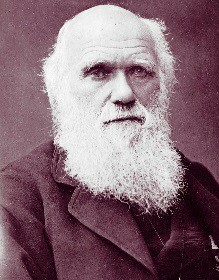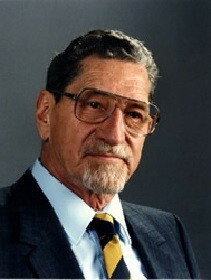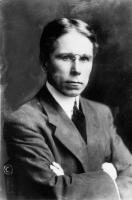Emotional psychology: main theories of emotion
Emotions are a field of research that, for centuries, has fascinated scientists.
However, their complexity has made it difficult to define and understand how they work at the same time. which has not prevented many researchers from having proposed to progress in this line of knowledge.
The existence of various theories of emotion produced throughout the history of psychology as science accounts for those efforts. Throughout this article we will know the most important ones.
- Article to deepen: "The basic emotions are four, and not six as was believed"
Emotions: what are they exactly?
The emotions they exert a great force on us and influence our thinking and our behavior, that is why they have a great weight in the study of psychology. In recent years, different theories have emerged that attempt to explain the how and why of human emotions and, furthermore, in the world of psychology, emotional intelligence has been gaining ground due to its benefits in people's well-being and emotional development.
Concepts like emotional validation, emotional self-control or emotional management, are becoming more and more familiar to us, and both in the world organizational as in sport, the correct emotional management is closely related to the performance.
However... How can we understand what an emotion is? Emotions are often defined as a complex affective state, a subjective reaction that occurs as a result of physiological or psychological changes that influence thinking and behavior. In psychology, they are associated with different phenomena, including temperament, personality, humor or motivation.
According to David G. Meyers, an expert emotional psychologist, human emotions involve "physiological arousal, expressive behavior, and conscious experience."
Theories of Emotion
The most important theories of emotion can be grouped into three categories: physiological, neurological Y cognitive.
Physiological theories suggest that intracorporeal responses are responsible for emotions. Neurological theories propose that activity in the brain leads to emotional responses. And finally, cognitive theories argue that thoughts and other mental activities play an essential role in the formation of emotions.
But, What theories of emotion exist? Here are the best known theories of emotional psychology.
Evolutionary Theory of Emotion (Charles Darwin)

The evolutionary theory of emotion has its origin in the ideas of Charles Darwin, what claimed that emotions evolved because they were adaptive and allowed human beings to survive and reproduce. For example, the emotion of afraid it forced people to fight or avoid danger.
Therefore, according to the evolutionary theory of emotion, our emotions exist because they serve us to survive. Emotions motivate people to respond quickly to a stimulus from the environment, which increases the chances of survival.
In addition, understanding the emotions of other people or animals also plays a crucial role in safety and survival.
James-Lange theory of emotion

This is one of the best known physiological theories of emotion. Proposed independently by William James and Carl Lange, This theory suggests that emotions occur as a consequence of physiological reactions to events.
Furthermore, this emotional reaction is dependent on the way we interpret those physical reactions. For example, imagine that you walk through the forest and see a bear. You start to shake and your heart races. According to the James-Lange theory, you will interpret your physical reaction and conclude that you are scared: "I am trembling and therefore I am afraid." So, this theory states that you are not trembling because you are scared, but you are scared because you are trembling.
Cannon-Bard theory of emotion

Another well-known theory of emotion is that of Cannon-Bard. Walter Cannon disagreed with the above theory for various reasons. First, suggested that people experience the physiological reactions associated with emotions without feeling the emotion. For example, your heart can race because you play sports, not necessarily because of fear. In addition, Cannon suggested that we feel emotions at the same time as physiological reactions. Cannon proposed this theory in the 1920s, but the physiologist Philip Bard, during the 1930s decided to expand on this work.
Specifically, this theory suggests that emotions occur when the thalamus sends a message to the brain in response to a stimulus, causing a physiological reaction. At the same time, the brain also receives a message about the emotional experience. This happens simultaneously.
Schachter-Singer theory

This theory is part of the cognitive theories of emotion, and suggests that physiological activation occurs first. Next, the individual must identify the reasons for this activation to experience the emotion label. A stimulus elicits a physiological response that is then cognitively interpreted and labeled, which becomes the emotional experience.
Schachter and Singer's theory is inspired by the previous two. On the one hand, like the James-Lange theory, it proposes that people infer their emotions from physiological responses. However, it differs from this by the importance of the situation and the cognitive interpretation that individuals make to label emotions.
On the other hand, like the Cannon-Bard theory, it also holds that similar physiological reactions provoke a great variety of emotions.
Cognitive assessment theory

According to this theory, the thought must occur before the experience of the emotion. Richard Lazarus was the pioneer in this theory, which is why it is often called the Lazarus theory of emotion. In short, this theoretical artifact claims that the sequence of events first involves a stimulus, followed by an emotion.
For example, if you are in a forest and you see a bear, you will first think that you are in danger. This causes the emotional experience of fear and the physiological reaction, which can end in flight.
Theory of facial feedback emotions
This theory states that facial expressions are connected with emotional experience. Some time ago both Charles Darwin and William James noted that sometimes the answers physiological effects had a direct impact on emotions, rather than simply being a consequence of the emotion. According to the theorists of this theory, emotions are directly related to the changes produced in the facial muscles.
For example, people who have to force their smile in a certain social environment will have a better time than those who have a more neutral facial expression.
The relationship of emotions with well-being
In the last decade, the theory of emotional intelligence has started to gain ground. This type of intelligence, which began to become popular thanks to Daniel goleman, has its origin in the vision of the teacher's intelligence Howard Gardner, the Theory of multiple intelligences.
There are numerous studies that affirm that emotional intelligence is key to people's well-being, since self-knowledge, emotional regulation or empathy They positively affect the psychological well-being of individuals, as well as personal relationships or work or sports development.
To learn more about emotional intelligence, we recommend reading the following articles:
- "What is emotional intelligence? Discovering the importance of emotions"
- "The 10 benefits of emotional intelligence"
Bibliographic references:
- Dalgleish, T. (2004). The emotional brain. Nature Reviews Neuroscience. 5 (7): pp. 583 - 589.
- Darwin, C. (1872). The Expression of the Emotions in Man and Animals. London: John Murray.
- Ellsworth, P.C. (1994). William James and Emotion: Is a Century of Fame Worth a Century of Misunderstanding? Psychological Review. 101 (2): pp. 222 - 229.
- Friedman, B.H. (2010). Feelings and the body: The Jamesian perspective on autonomic specificity of emotion. Biological Psychology. 84 (3): pp. 383 - 393.


